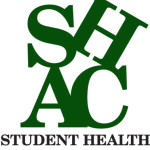Texas School Health Advisory Committee (TSHAC) Resources, Recommendations and Research
SHAC Guide for Texas School Districts – Revised July 2015
 The School Health Program of the Department of State Health Services produced this helpful School Health Advisory Councils Guide for Texas School Districts for help to get started while building a successful SHAC. The guide has been updated with the most current information available in support of efforts to provide school health education and services through the district’s SHAC.
The School Health Program of the Department of State Health Services produced this helpful School Health Advisory Councils Guide for Texas School Districts for help to get started while building a successful SHAC. The guide has been updated with the most current information available in support of efforts to provide school health education and services through the district’s SHAC.
To access the guide, go to http://www.dshs.state.tx.us/schoolhealth/sdhac.shtm.
To find out if your school district has a SHAC, who is in charge and how you can be involved or get more information, contact the district’s administrative office and schedule a time to meet with the staff person that has oversight for the SHAC.
The TSHAC has resources, and recommendations and research schools and district School Health Advisory Councils (SHAC) can use to meet legislative requirements and support important issues schools may face. Go to www.dshs.state.tx.us/schoolhealth/shadviserecommendations.shtm to access the following Research and Recommendation documents created by the TSHAC:
- Recommendations and Research on Benefits to Students in School Districts that Prohibit Physical Activity as Punishment
- Recommendations and Research on Health Education for all Texas Students, Kindergarten through 12th Grade
- Recommendations and Research on Offering Physical Activity Outside of the School Day
- Recommendations and Research on Physical Education
- Recommendations and Research on Recess and Physical Activity: Impact on Student Health and Academic, Social and Emotional Development
- Recommendations for Sodium Reduction in Schools
- Recommendations for Offering Physical Activity Outside of the School Day
- Recommendations and Research on Student Consumption of Regular and Diet Sodas in High Schools
- Recommendations and Research on School Bus and Automobile Idling
Go to www.dshs.state.tx.us/schoolhealth/shadviseresources.shtm to access the following resources for schools and SHACs developed by the TSHAC:
- Bullying Prevention Tool Kit
- Childhood Obesity Prevention Resolution
- Coordinated School Health Resource Data Sets
- School Health Services Staff Roles
- School Health Advisory Council Self-Assessment
- Annual SHAC Progress Report to Local School Boards
- School Health Initiative Screening Tool
- Resources for Students and Families: Dealing with the Economic Crisis
- SHAC Meeting Agenda Topics
- Resolution Supporting Inclusive Practices for Students with Exceptionalities in Texas Public Schools
Communicable Disease Chart and Notes for Schools and Child-Care Centers
Revised June, 2013, the Communicable Disease Chart and Notes for Schools and Child-Care Centers is available. To order the wall size poster, go to https://secure.immunizetexasorderform.com/default.asp and request item number 6-30. To access a copy on line, go to https://www.dshs.state.tx.us/idcu/health/schools_childcare/resources/. This chart includes information about prevalent diseases/conditions for school and child-care facility staff members to be used in day-to-day operations. Other groups might find the chart helpful as well. The following information is included for 43 conditions:
- Incubation
- Transmission
- Signs and symptoms
- Exclusion and readmission criteria
- Whether it’s a reportable condition
- Immunization
- Comments on prevention, treatment etc.
In the “Notes” section there is information about when a communicable disease is suspected, hand washing, diapering, environmental surfaces and personal items, respiratory hygiene and cough etiquette, standard precautions, immunization, and antibiotic use.
Back to School with Green and Healthy Products
Maintaining a healthy learning environment is an important part of making sure that every child can learn. But all too often, conventional products—from computers to paints to cleaning supplies—expose school occupants to toxic chemicals that can pollute the indoor air. Children and staff who can’t concentrate or miss school or are uncomfortable in class will not succeed this year. Fortunately, reducing toxic chemicals in products will reduce air pollutants inside schools and thus will benefit all occupants. There are a few ways to help the school use a wide range of greener products.
- Select nontoxic (low emission) school supplies, such as nontoxic markers and pens, and notebooks and binders made without PVC plastics.
- Select EPEAT-rated electronics to minimize toxic chemicals, reduce the disposal costs of outdated electronics, and save on energy. (EPEAT is a certification system for greener electronics).
- Do not send cleaning or disinfecting products from home to school to use in classrooms.
- Ask your local school if it is using money-saving, third-party certified green cleaning products (reliable certifiers are Green Seal (US) and UL-E (EcoLogo). If the school is already using green products, those can be diluted with plain water for wiping up sticky spills in classrooms.
- Ask the school if it plans to do any interior painting in the coming year, and if so, ask it to buy low-emission, third-party certified interior wall or ceiling paints. These will help reduce indoor air pollutants.
To find resources and tip sheets to help get started on reducing chemical hazards inside schools, go to http://healthyschools.org/coalitionactionkit.html and http://www.cleaningforhealthyschools.org/.
Check out these resources from National Pesticide Information Center (NPIC)
New search mechanism for pesticide product information! NPIC Pesticide Research Online (NPRO)
Webinar explaining NPRO (30+ minutes) For help getting started with NPRO, call us at 1-800-858-7378.
New Video! Pesticides on Clothes: How do I clean them? (1.5 minutes) … also available in Spanish
New web pages! Beneficial Insects – A quick list
– In the lawn
– In the garden
– In agriculture
New FAQs:
What does it mean when food is organic? … also available in Spanish
Is ‘food grade’ diatomaceous earth okay for pest control? … also available in Spanish
What can I do after a flood? … also available in Spanish
Newly revised & updated web pages:
Protecting Wildlife from Pesticides
Problem Wildlife in the Garden & Yard
Problem Wildlife in the House
New podcast!
Is ‘food grade’ diatomaceous earth okay for pest control?
In case you missed it, mouse-over the circles on our new web page: Natural and Biological Pesticides
You will learn about the similarities and differences between the terms “organic”, “biopesticide” and “minimum risk pesticide.”
National Pesticide Information Center
Oregon State University
Department of Environmental & Molecular Toxicology
(800) 858-7378
Email: npic@ace.orst.edu
If you have any questions, please call us at 800-858-7378, Monday – Friday from 8:00 am – 12:00 pm (Pacific), 11:00 am – 3:00 pm (Eastern).
School Indoor Air Quality Assessments Go Mobile / EPA Launches School IAQ Assessment Mobile App
 By: Julia P. Valentine, U.S. Environmental Protection Agency
By: Julia P. Valentine, U.S. Environmental Protection Agency
WASHINGTON — The U.S. Environmental Protection Agency (EPA) today launched a new mobile app to assist schools and school districts with performing comprehensive indoor air quality (IAQ) facility assessments to protect the health of children and school staff. The School IAQ Assessment mobile app is a “one-stop shop” for accessing guidance from EPA’s Indoor Air Quality Tools for Schools Action Kit.
“Kids learn best in a healthy school environment. Now there’s an app for that! This app puts a powerful tool in the hands of people at the state, district and school level to protect children’s health” said Janet McCabe, assistant administrator for EPA’s Office of Air and Radiation. “This mobile app is our latest effort to provide updated, user-friendly guidance to help schools identify, resolve and prevent indoor air quality problems, using low- and no-cost measures.”
The mobile app provides schools and school districts with an efficient, innovative technology integrated with proven strategies for addressing critical building-related environmental health issues such as ventilation, cleaning and maintenance, environmental asthma triggers, radon, and integrated pest management. Schools that want to develop, sustain or reinvigorate their IAQ management programs can use this tool to identify and prioritize IAQ improvements. The School IAQ Assessment mobile app complements existing IAQ management programs and can become the central tracking mechanism schools and districts use to organize building assessments and prioritize IAQ improvements.
Today, half of the schools in the United States have adopted IAQ management programs, the majority of which are based on EPA’s IAQ Tools for Schools guidance. EPA developed the mobile app to help these schools more efficiently carry out their IAQ management programs and to help the remaining nearly 60,000 schools to conduct regular and thorough assessments to ensure their schools are safe and productive places to learn.
How It Works
• DOWNLOAD: Go to www.epa.gov/iaq/schools/iaq_schools_mobile_app and initiate the app on your Apple or Android smart device. Access the How to Get Started section to review the set-up options, intent and capabilities of the app.
• ASSESS: Conduct a walkthrough of your school buildings using a set of easy-to-follow checklists — all you need is an Internet connection. Then, submit your completed checklists via email to a designated IAQ coordinator for review and follow-up action. You can also attach photos and detailed notes about the assessed area in your completed checklist submission.
• DISCOVER: The completed checklists will identify IAQ concerns and validate good IAQ practices already in place. Checklists are provided to your designated IAQ Coordinator with recommended action steps generated by the app to address identified IAQ problems. Recommendations are based on the Framework for Effective IAQ Managementfor comprehensively addressing IAQ.
• LEARN MORE: The mobile app includes other valuable resources from the IAQ Tools for Schools Action Kit, such as information on radon and asthma management in schools, as well as, EPA’s newest guidance – Energy Savings Plus Health: Indoor Air Quality Guidelines for School Building Upgrades, which integrates IAQ protections into school energy retrofits and other building projects.
Visit http://www.epa.gov/iaq/schools/iaq_schools_mobile_app/ to download the new mobile app andwww.epa.gov/schools for other valuable school environmental health resources.


 .
.